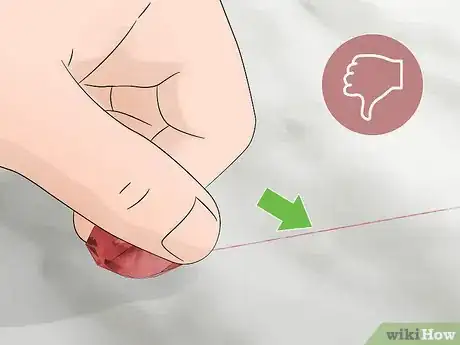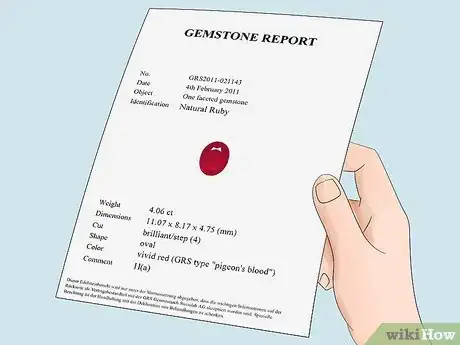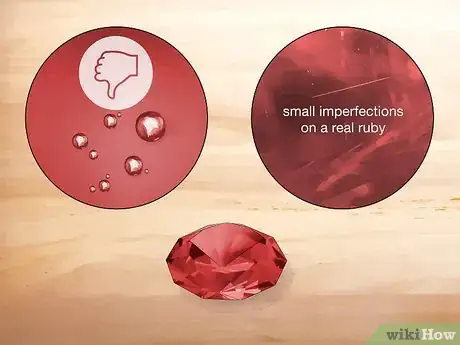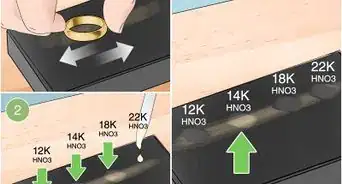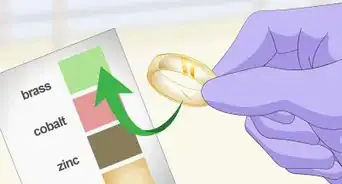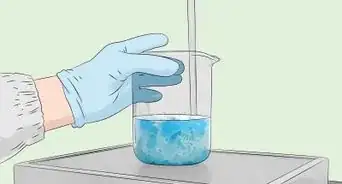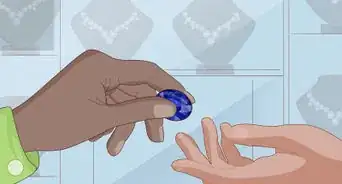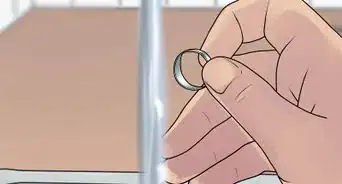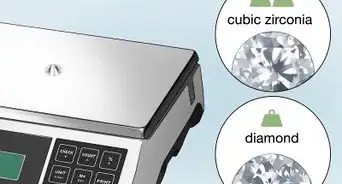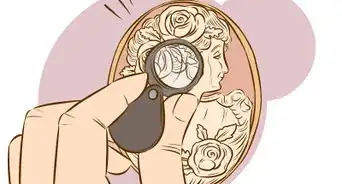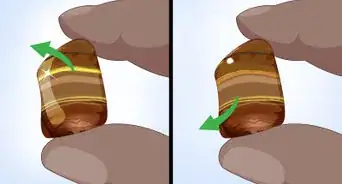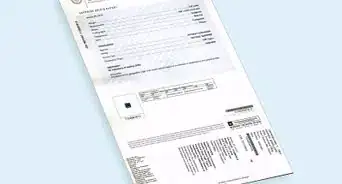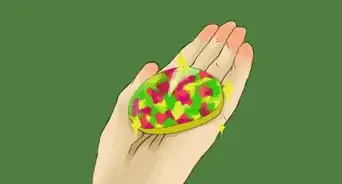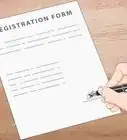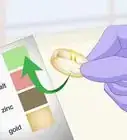This article was co-authored by Jerry Ehrenwald. Jerry Ehrenwald, GG, ASA, is a graduate gemologist in New York City. He is the previous President of the International Gemological Institute and the inventor of U.S.-patented Laserscribe℠, a means of laser inscribing onto a diamond a unique indicia, such as a DIN (Diamond Identification Number). He is a senior member of the American Society of Appraisers (ASA) and is a member of the Twenty-Four Karat Club of the City of New York, a social club limited to 200 of the most accomplished individuals in the jewelry business.
There are 10 references cited in this article, which can be found at the bottom of the page.
wikiHow marks an article as reader-approved once it receives enough positive feedback. This article received 29 testimonials and 92% of readers who voted found it helpful, earning it our reader-approved status.
This article has been viewed 715,911 times.
Rubies can be the most valuable colored gemstone, based on price-per-carat.[1] However, there are a lot of fakes out there, and it can be hard to tell if a ruby is real. Ultimately, the surest way to tell is to take the stone to a licensed jeweler. At home, you can gauge the ruby's authenticity by looking at its color and its hardness. Use a 10-power magnifier, if possible, to inspect the ruby up close.
Things You Should Know
- Do a scratch test—if a coin can scratch the top of the stone, then it's likely that it's not a real ruby.
- Do research and compare the gem to imitation stones, like garnet, tourmaline, glass, and composite gems.
- Ultimately, the safest way to ensure your stone is real is to take it to a jeweler. A professional can give you a guarantee.
Steps
Comparison Chart
Inspecting the Ruby at Home
-
1Tell by the color and the shine. Real rubies glow with a deep, vivid, almost "stoplight" red. Fake gems are often dull: they are "light, but not bright." If the gem is more of a dark red, then it may be garnet instead of a ruby.[2] If it is a real ruby, however, know that darker stones are usually worth more than lighter stones.
- Check for a consistent and even color throughout the stone. Fakes are more likely to contain blemishes and impure spots. That said: rubies do sometimes have imperfections.
- Use the "stoplight red" as a guide, but do not expect to find a real ruby that is actually that bright. If you do, then the ruby is likely fake. A real ruby should be more like a bright traffic light, however, than like a dull stone.[3]
-
2Compare the ruby stone to a shard of red glass. Rubies and other varieties of sapphire are often faked as glass. If the glass and stone look similar, then you may just be holding two pieces of red glass![4] It is relatively common for dealers to fake rubies using a glass composite.[5]Advertisement
-
3Try to scratch the surface. Real rubies are extremely hard stones. Grind a fingernail or a coin into the surface of the "ruby" and see if you are able to scratch it. If the ruby shows a scratch, then there's a good chance that it is not a real ruby. Only a diamond can scratch a ruby.
- Composite rubies are not as durable as real rubies. There is a chance that the ruby is not a complete "fake," and just a machine-made stone.[6]
-
4See if the ruby rubs off on another surface. Gently scratch the stone against a hard, smooth surface: porcelain tile or a piece of clear glass. The stone should scratch the surface whether or not it is a "ruby." The tip-off, however, comes if the "ruby" leaves a red mark on the surface where you scratched it.[7]
- The red mark might be a sign that the gem is artificially colored. It might tell you that the "gem" is actually made from a much weaker material.
-
5Know the types of fake. The stones commonly used as ruby imitations include garnets, tourmaline, glass, and composite gems.[8]
- Garnets are dull, dark-red silicate minerals. They are much softer than a ruby.
- Tourmaline is a reddish-pink silicate mineral. Tourmaline is somewhat harder than a garnet, but much softer than the ruby.
- Red-colored glass imitations are usually cheap, but not very durable. It should be easy to tell if a "ruby" is actually made from glass.
- Composite rubies are real rubies that have been fused with glass. This makes the stone larger so that a jeweler can sell it for more money. Beware! Composite rubies are often sold as "real" rubies, for real ruby prices.[9]
Consulting a Jeweler
-
1Bring the stone to a professional jeweler. Ultimately, the safest way to be sure is to pay a professional to have a look at the gem. He or she should be able to tell you whether or not the ruby is real.
- Look up reputable jewelers in your city. Consider looking at reviews online before you visit the jeweler. Check whether other customers were satisfied with the accuracy of this person's analysis.
EXPERT TIPJerry Ehrenwald, GG, ASA, is a graduate gemologist in New York City. He is the previous President of the International Gemological Institute and the inventor of U.S.-patented Laserscribe℠, a means of laser inscribing onto a diamond a unique indicia, such as a DIN (Diamond Identification Number). He is a senior member of the American Society of Appraisers (ASA) and is a member of the Twenty-Four Karat Club of the City of New York, a social club limited to 200 of the most accomplished individuals in the jewelry business.Former President, International Gemological Institute & Graduate Gemologist
 Jerry Ehrenwald
Jerry Ehrenwald
Former President, International Gemological Institute & Graduate GemologistIf there are still questions about the gem's authenticity, take it to a gemologist. An independent, accredited grading laboratory can analyze the stone for authenticity and provide other data like shape, cut, weight, color, and optical characteristics.
-
2Get an appraisal. A jeweler can analyze the ruby and tell you how much it is worth. Others may pay much more or much less for the gem – but an appraisal is usually a good ballpark estimate of what a stone is worth in monetary value.[10]
-
3Certify the ruby. A licensed jeweler can give you an official certification that your ruby is the real deal. This document will act as legitimizing proof should you ever decide to sell the ruby. Make a copy of the certificate and keep it in a safe, secret place.[11]
- Certify your ruby for the sake of insurance. If you ever lose the ruby in a disaster or another mix-up, then you will be more likely to receive compensation for the loss if you can prove that you lost an actual ruby.
- If you plan to keep the ruby, keep it as a family heirloom. When your family or friends one day inherit the ruby, it will be much more valuable if it is certified. You will also save them the trouble of going through the same steps to determine whether the ruby is real.
Inspecting with a Magnifier
-
1Inspect the ruby with a 10-power magnifier. Use a jeweler's loupe or a standard microscope. If you don't have access to a high-powered magnification tool of your own, consider asking a friend or a local lab. Otherwise, just visit a jeweler.
-
2Expect microscopic flaws. Look for small, microscopic flaws that would otherwise be invisible to the naked eye. You should see some small imperfections on a real ruby. Fake and lab-created rubies are almost always flawless, as the natural flaws are so tiny that they are extremely hard to replicate.
- If you see bubbles of any kind, then you are likely dealing with a fake ruby. Look for flaws other than bubbles.
- External flaws (blemishes) include scratches, pits, nicks, and small scrapes. Internal flaws (inclusions) are categorized as: cracks (feathers) crystals, negative crystals, silk, fingerprints, halos, cavities, chips, and color zoning.
-
3Look at the ruby's cuts and facets. The intricacies of the ruby surface will only be readily visible beneath a 10-power microscope. If the ruby is rounded, rolled, or excessively smooth, then it is probably a fake gem. The stone might be the real deal if the facet is clean, pristine, and sharp-cut.
Things You'll Need
- 10-power jeweller's loupe
- Flat surface of porcelain or glass
- Coin
References
- ↑ http://www.gia.edu/ruby
- ↑ https://www.truefacet.com/guide/spot-difference-rubies-garnets/
- ↑ http://www.gia.edu/gem-imitation
- ↑ http://www.today.com/news/red-ruby-alert-major-stores-selling-gems-filled-glass-1D79975847
- ↑ http://thejewelryloupe.com/buyer-beware-that-ruby-may-be-a-glass-composite/
- ↑ http://abcnews.go.com/GMA/ConsumerNews/rubies-real-deal/story?id=8988951
- ↑ https://www.quora.com/Multicolour-Gems/How-do-you-tell-if-a-Ruby-is-real
- ↑ http://www.jewelrynotes.com/how-to-identify-fake-rubies/
- ↑ http://thejewelryloupe.com/buyer-beware-that-ruby-may-be-a-glass-composite/
About This Article
To tell if a ruby is real, start by looking at the shine of the ruby under a light. It should be bright and deep, like the shine of a stop light. If you’re able to, try to scratch the surface of the ruby with your fingernail or a coin to make sure it doesn’t break. Additionally, you can rub it against another surface, like glass or porcelain tile to see if it leaves a red mark, which means that the stone is artificially colored. Compare the ruby to other similar gems, like garnet or tourmaline if possible. For tips on consulting a professional jeweler to check your ruby, scroll down!




